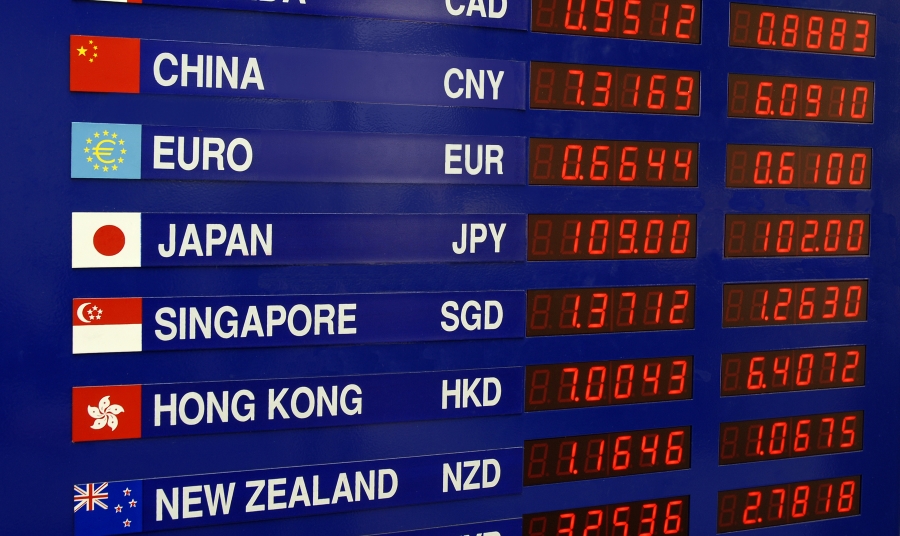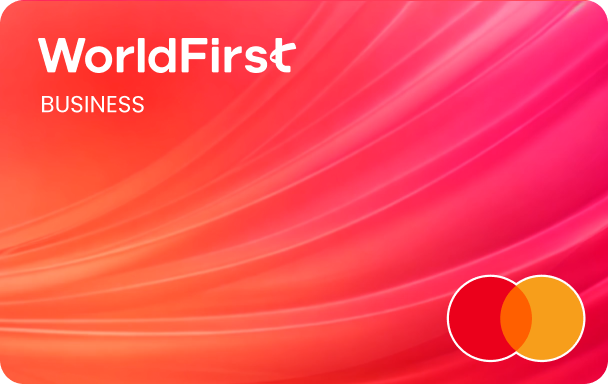Foreign exchange risk management: How to make international business more affordable
Last update: 19 May 2025

If you’re a business operating across borders, one of the biggest threats to your profitability is volatility in the foreign exchange market. You’re already running on very tight margins, but these can be wiped out entirely simply due to fluctuations in the currency market.
For instance, if your margins are smaller than 10%, it’s possible that your international store can be profitable one month and unprofitable the next – simply because of changes in exchange rates. Add transaction fees into the equation and you can easily find yourself operating at a loss.
As such, it’s vital to have foreign exchange risk management strategies in place to ensure you don’t get stung by ever-changing currency exchange fees.
In this guide, we share how you can protect yourself against three of the most common risks associated with the foreign exchange market when you’re selling overseas.
We also show you how we can help at WorldFirst. We provide cross-border businesses with solutions for simplified global payments, including the World Account, our multi-currency business account.
In this guide, we cover:
- Three key foreign exchange risks (and how to protect yourself against them)
- 1. It’s hard to protect your margins when pricing products in foreign currency
- 2. It can be costly and inconvenient to accept payments in multiple currencies
- 3. You can be vulnerable to exchange rate changes when paying international suppliers
- How you can manage foreign exchange risk with WorldFirst
- How Fresh4U relies on WorldFirst to manage its foreign exchange and global payments
Want to reduce your exposure to exchange rate risk when making international payments? Hold foreign currency and take advantage of competitive exchange rates with WorldFirst. Open a World Account today.
Three key foreign exchange risks (and how to protect yourself against them)
1. It’s hard to protect your margins when pricing products in foreign currency
If you run an online store on multiple international marketplaces like Amazon or even your own direct-to-consumer store, it’s easy to open up your business to international customers. However, when selling across borders, pricing your products becomes more of a challenge:
- Firstly, your prices should reflect what international audiences expect to pay in their home country. If your potential customers can buy products domestically more cheaply, they’re not likely to shop with you – particularly when you factor in shipping.
- Secondly, your product pricing should protect you from any changes in foreign exchange rates. For instance, you should have enough margin on your products so that they stay profitable despite daily fluctuations in rates.
This is a difficult balance to get right. But there are tools out there that can help. For example, pricing software tools known as repricers use AI to calculate and re-price your goods based on how much your direct competitors charge for the same products. You can use these tools to check price points within select countries to make sure that your prices match the buying power of your customers.
Pricing your products competitively on marketplace platforms helps you boost conversions. If the marketplace algorithm places your products high in search rankings, you can lower your profit margins and make up your losses via an increased number of conversions. However, you can also set your profit margins within these tools to ensure the repricer doesn’t go below your lowest desired price point.
2. It can be costly and inconvenient to accept payments in multiple currencies
International customers typically feel more comfortable paying for products in their home currencies. So, if you’re selling in different countries, you’ll need a way to receive your sales profits in local money.
However, if you do this, you may want to send your profits back into your home currency. The trouble here is that, if you do this regularly, you’ll often be subject to international transaction fees – and there’s the risk of currency values turning against you.
One of the easiest ways to reduce this risk is to hold funds in foreign currencies, alongside your own home currency. You have two options to do this:
- Traditionally, you could open a local bank account in every country that you’re selling in, so that you can hold funds (and pay suppliers) locally. Some online marketplaces – such as Amazon US – even require that you have a local account before you can sell. However, this option typically means that you need a local address too.
Plus, you’ll need to handle the admin involved in managing your different accounts in all the territories in which you operate – as well as the maintenance fees for each account. If you’re operating in many countries, the work involved in managing these accounts quickly snowballs.
- Alternatively, you could open a multi-currency business account to hold these funds. The trouble here is that most multi-currency accounts from high-street banks come with minimum deposit agreements, transfer fees and monthly payments to keep the account open. It means that such accounts may not be the most cost-effective option.
To avoid these costs, and avoid the hassle of setting up accounts with local banks, it makes sense to use an online payment solution like WorldFirst.
With WorldFirst, SMEs can open a multi-currency World Account for free. Once approved, you can start collecting foreign payments in less than 24 hours. There’s no minimum deposit amount required, and from one dashboard, you can open receiving accounts in 20+ currencies – with local account details.
Find out more about the World Account below.
3. You can be vulnerable to exchange rate changes when paying international suppliers
Paying international suppliers is another crucial area where effective foreign exchange risk management is vital. Just as you can lose profits on the products you sell due to FX changes, for the same reason you can also find yourself paying your suppliers more for the same products.
For instance, imagine a UK brand that imports from France. Maybe the brand used to pay in EUR when the exchange rate was relatively stable. However, when GBP loses value, they end up with much higher costs.
There are two ways that you can reduce the risk of being negatively affected by this FX volatility:
- Simply hold your funds in the currency with which you pay suppliers. For instance, if you sell in Europe and use European suppliers, it makes sense to hold funds in EUR – rather than converting your sales profits back into your home currency. This way, you don’t need to exchange money at all, meaning you won’t be affected by FX fluctuations.
The easiest and most affordable way to hold over 20 foreign currencies is to open a World Account. You can find out more about how it works below.
- Alternatively, you can sign a forward exchange contract (FEC) with the supplier to fix the exchange rate at which you pay them. In this instance, the UK brand and the French manufacturer could agree to lock in an exchange rate of £0.95 for €1. This way, the importer keeps a predictable rate.
FECs are useful if you have an established business relationship, but they also come with drawbacks. For example, as an online seller, with a fixed FEC, you’re locked into paying the balance at an agreed rate for the contracted period, so you cannot switch to a cheaper supplier. Additionally, if the exchange moves significantly against you, you may need to pay back funds in a process known as a margin call.
How you can manage foreign exchange risks with WorldFirst
In this guide, we’ve shared some strategies and tools to manage the most common FX risks faced by companies involved in international trade. But if you’re committed to saving money on your cross-border business payments, a World Account can help.
At WorldFirst, we support ambitious e-commerce companies to scale globally. With a World Account, it’s easy to hold foreign currencies, pay suppliers more affordably in over 200 currencies and lock in exchange rates so you can make the cost of your global payments more predictable.
Here are three reasons why you should open a World Account today.
- Open 20+ local currency accounts and get paid like a local
- Pay suppliers, partners and staff worldwide in 100+ currencies
- Collect payments for free from 130+ marketplaces and payment gateways, including Amazon, Etsy, PayPal and Shopify
- Save with competitive exchange rates on currency conversions and transfers
- Lock in exchange rates for up to 24 months for cash flow certainty
Collect business payments and hold funds in 20+ currencies – with local account details
With a World Account, you can reduce your exposure to currency fluctuations and save on international transaction fees by holding funds in different currencies.
Simply set up an account and you can create receiving accounts in 20+ currencies, including CNH, USD, EUR and more. This dramatically reduces your exposure to currency movements, simply because it limits the number of times you need to convert currency. Instead, you can hold your receivables from international sales in the local currency and pay suppliers directly in those funds.
What’s more, for each account, you’ll receive local account details. Rather than depending on international payment networks, such as SWIFT, this enables you to take advantage of faster transactions through domestic networks. So, you can receive funds – and pay suppliers – much more quickly, for better future cash flow.
While it won’t affect your currency risk, having local account details also enables you to easily connect to e-commerce marketplaces. For instance, if you want to sell on Amazon US, you’ll need a local account.
Pay in over 100 currencies and lock in rates to make FX more profitable and predictable
With WorldFirst, you can make payments in 100+ currencies in 200+ different countries. So, no matter what currency you hold money in, you can pay suppliers and employees all over the world – quickly and at competitive rates.
Whoever you want to pay and when, we offer a range of features to help you get the best currency exchange rates and reduce your foreign currency risk:
- Make fast payments with spot contracts. If you want to make an international payment immediately, the rate you pay will be based on the market rate. 80% of these transactions settle in the recipient’s account within 24 hours.
- Lock in a rate with a forward contract. You can protect your business from currency fluctuations by securing an exchange rate over a set period of time for a given amount of currency. You can guarantee an exchange rate for up to 24 months, to help make your finances more predictable. Forward contracts are a type of hedging strategy that can protect you from financial loss.
With WorldFirst, you can choose between fixed, flexible and window forward contracts. For instance, in a window forward contract, you can buy specific amounts of currency within the settlement dates to provide you with a better overall exchange rate.
- Set a target rate with a firm order. Rate changes are an inevitable part of the forex market. But if you want to reduce potential losses and maximise your profits, you can set up a firm order with us. Simply tell us your target exchange rate and we can exchange your funds to your chosen currency whenever that rate is reached.
Open and manage your World Account effortlessly and for free
More than one million businesses have sent $300 billion around the world using WorldFirst. It couldn’t be simpler for you to join them and start sending money internationally yourself.
You can get set up with a World Account fully online. All you need to do is visit our application portal and follow the simple steps. Unlike many other multi-currency accounts, it’s completely free to set up an account with us.
You’ll need to enter some business details and provide some basic documentation to prove your identity. Then, we’ll verify your application usually within two business days.
Once your account has been verified, you can create currency accounts in 20+ currencies, including US dollar, euro and GBP. Then, you can manage all of your accounts through the same platform, to get easy visibility on your inflows, outflows and bottom line across all of the currencies you hold.
To open a currency account and hold local currency, you won’t need to have a local presence or address. And we don’t charge any fees for you to hold currency or keep an account open. You can find more information on our pricing here.
How Fresh4U relies on WorldFirst to manage its foreign exchange and global payments
While a student in London, Danial Paisawala was working part-time in the local fruit and veg market. There, he developed a passion for fresh produce that led him to set up the Fresh4U, a business selling produce from around the world.
Initially, Danial had few overheads, no employees to pay, and no business costs.
“We would go to the airport, pick it up and deliver to the markets. You start with one country, two or three products and then you start adding on products and adding on countries. And that’s how you sort of go on to that stage.”
However, as the business grew, Danial started to understand the threat of exchange rate movements – and the need for a robust risk management policy.
“Foreign exchange is massive. If we were buying a box of ginger for [USD] $1.25 from China last month, [it] would cost me a pound more today than a month ago, just because of that five cents difference in exchange rate. And that increases the cost.
“The prices change every day – there’s no fixed pricing. Tomatoes could be four quid today, tomorrow it’s eight quid and then the day after, it could be back to two pounds.”
To find some stability among these exchange rate fluctuations, Danial turned to WorldFirst.
“We’ve tried three or four competitors, always having WorldFirst as a support on the side as well. But it never worked out with them.
“[WorldFirst] understands my requirements. It’s much better for us as consumers to have the service that we need. It’s a relationship.”
Now, Fresh4U has warehouses across London – and even has wholesale customers in Europe. And with WorldFirst’s competitive exchange rates and reliable service, it’s hoping to grow ever further.
Read the full case study: Fresh4U savours the success of global trade
Open a World Account today and better manage your foreign exchange risk
If you’re an international business looking to reduce your currency exposure and improve your financial management, WorldFirst can help.
Sign up for a World Account for free today and you can:
- Hold funds in over 20 currencies
- Make payment in 100+ currencies to 200+ countries
- Convert currencies at competitive rates
- Lock in exchange rates to benefit from today’s rate at a future date
- Set target rates to easily benefit from affordable FX conversions
Want to reduce your FX risk management? Open a World Account today.


Foreign exchange risk management: How to make international business more affordable
Foreign exchange risk management is vital to e-commerce brands. This article offers tips to help with foreign exchange risk.
May / 2025
We’re taking the fight to financial crime
Find out how our team tackles financial crime and what businesses can do if they think they’ve fallen victims.
Dec / 2024
Receiving foreign currency payments in local currency
Learn about the pros and cons of local currency payments.
Dec / 2024WorldFirst articles cover strategies to mitigate risk, the latest FX insights, steps towards global expansion and key industry trends. Choose a category, product or service below to find out more.
- Almost 1,000,000 businesses have sent USD$300B around the world with WorldFirst and its partner brands since 2004
- Your money is safeguarded with leading financial institutions


































































